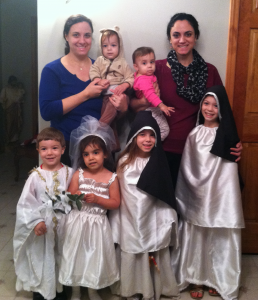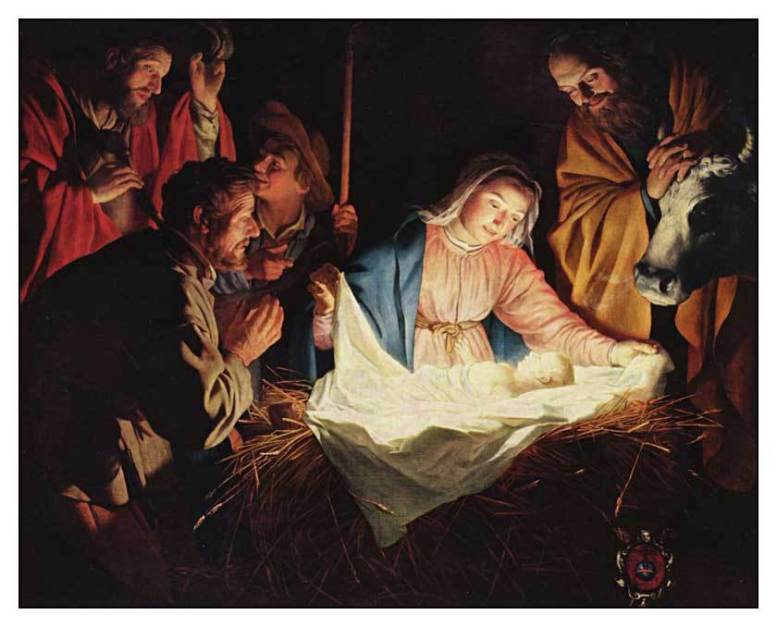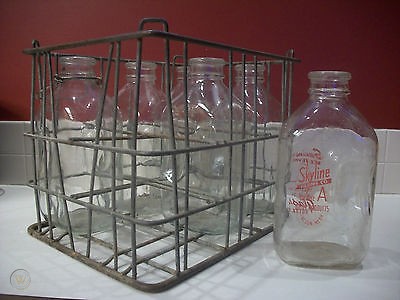A Priestly Halloween Costume
A Priestly Halloween Costume

 A few weeks ago, my daughter Anna had a birthday party at her home. Anna has five children. They range in age from one-year-old to nine years old. After the party was over, I walked into Anna’s kitchen to say goodbye to her. When I entered the kitchen, I heard her two-year-old son Peter ask, “Mom, can I wear my vestment?” Anna replied, “Yes, I’ll get it for you in a few minutes.”
A few weeks ago, my daughter Anna had a birthday party at her home. Anna has five children. They range in age from one-year-old to nine years old. After the party was over, I walked into Anna’s kitchen to say goodbye to her. When I entered the kitchen, I heard her two-year-old son Peter ask, “Mom, can I wear my vestment?” Anna replied, “Yes, I’ll get it for you in a few minutes.”
The vestment that Peter was referring to is similar to the one that is being worn by his brother in the picture on this page. The picture was taken on Halloween, two years ago. The two women in the picture are my daughters, Anna and Maria. Anna is on the left holding her son, Peter, and Maria is on the right holding her daughter, Katie.
The children standing in front are from left to right: Anna’s son David (dressed as a priest); Maria’s daughter Grace (dressed as a bride); Anna’s daughter Mary (dressed as a nun); and Anna’s daughter Kathryn (dressed as a nun).
David is wearing a vestment that is similar to the one Peter was referring to when he asked his mother if he could wear his vestment. Anna recently made a second vestment for Peter. She also made the costumes that her daughters were wearing in the picture.
A couple of years ago, David received a children’s priest kit as a gift. The kit includes a chalice, paten, and other items that a priest uses when he celebrates Mass. David and his brother and sisters frequently celebrate Mass in their home. They know all about the Mass because Anna attends daily Mass with them.
This is what goes on in the home of a devout Catholic family. It’s what went on in my parents’ home when I was growing up. I remember frequently participating in Mass at home with my brothers and sisters when we were young. We used oyster crackers for communion, and everyone who participated had their own role in the Mass.
I also remember learning how to make rosaries by hand from wire, beads, and a rosary pliers. On several occasions, my mom set up an assembly line-type process in our dining room so we could help her make green and brown scapulars for her to send to religious organizations to pass out to other Catholics.
On several occasions in the past, I’ve shared my definition of a “devout” Catholic: A committed Catholic who willfully and regularly engages in acts of worship and service that go beyond the requirements of the Church.
On Sunday, October 16, 2015, the parents of “the little flower,” Saint Therese of Lisieux, were canonized by Pope Francis. Saint Therese’s parents were Louis and Zelie Martin. The Martins had nine children, four of whom died when they were infants. Each of their five remaining children — all daughters — eventually entered the religious life.
The Martins were devout Catholics who attended daily Mass and were known for their generosity toward the needy, the sick, and the dying. They regularly prayed and fasted, visited the elderly and the sick, and welcomed the poor into their home.
What would have happened if Saint Louis and Saint Zelie Martin had decided to limit the size of their family by practicing contraception? The answer to the question is obvious.
When Catholic couples use contraception to limit the size of their families, they cut off the flow of all grace from the Holy Spirit to their family. The very act of using contraception to avoid or delay a pregnancy, terminates the relationship that the couple has with the Holy Spirit. That relationship can only be restored with a good confession and obedience and adherence to Catholic doctrine.
The use of contraception has always been a mortal sin. A mortal sin deprives a person’s soul of sanctifying grace. When a couple uses contraception, they are deprived of the grace, guidance, and protection of the Holy Spirit. Without the grace of the Holy Spirit, it is impossible for them to be devout Catholics.
So here’s my question for you: What is the primary reason that there is a shortage of priests? The answer to the question is: contraception.
It is the devout Catholic couples who have resisted the temptation to practice contraception who have traditionally provided our church with the majority of priests, nuns, sisters, and other individuals who enter the religious life.
Do you know when the priest shortage problem started? It started during the 1930s when Catholic couples began using the newly invented, widely available, latex condoms that were available for purchase. My grandmother, Cecilia LaHood, had six children. My mom was born in 1932. She was my grandmother’s oldest child.
In a conversation that I had with my grandmother in 1985, she told me that most of her Catholic friends used contraception to limit the size of their families. She told me that several of her friends lectured her when she continued to have children. They told her that she did not have to subject herself to the pain, suffering, and work associated with pregnancy and raising a large family. They encouraged her to give herself a break.
My grandmother’s friends considered themselves “good Catholics.” There are a lot of cafeteria Catholics who consider themselves to be good Catholics.
It is estimated that over one million babies are aborted each year in the United States. There is no estimate as to the millions of babies who never come into existence because of contraception. It’s probably safe to say that over one million American Catholic baby boys fail to come into existence each year because of contraception.
What if those one million boys were born each year to devout Catholic parents? If one-tenth of one percent of those boys later became priests, we would eventually add 1,000 new priests to our church each year.
Studies have shown that less than five percent of young Catholic parents in the United States are devout Catholics who abide by the rules of the church concerning contraception.
We will never solve the problem of our shortage of priests until the grave sin of contraception is eradicated from the lives of our Catholic couples.



1 Comment
DEAR GEORGETTE AND HARRY –
ANOTHER BEAUTIFUL WRITING! EACH TIME THERE ARE LESSONS TO BE LEARNED FROM GOOD FAMILY LIFE. IF CONTRACEPTION WAS NOT AVAILABLE, WE MAY ALSO HAVE HAD MORE RELIGIOUS VOCATIONS. OTHER REASONS WHY YOUNG PEOPLE DO NOT CHOOSE RELIGIOUS LIFE INCLUDE THAT THERE ARE NOW MANY OTHER “VOCATIONS” OFFERED THAT WERE NOT OFFERED AT THE TIME, FOR EXAMPLE, WHEN I ENTERED. THE “VOLUNTEER” OFFERINGS CAME INTO BEING LATER, SO THAT ONE COULD DEVOTE A FEW YEARS TO IT, AND THEN THEY WOULD BE FREE OF THAT AND MARRY OR CHOOSE ANOTHER CAREER, ETC.THANK YOU FOR A GREAT WRITE-UP! LOVE, SISTER ROBERTA